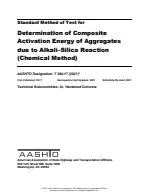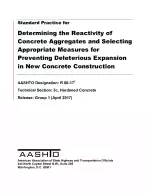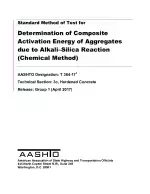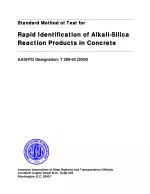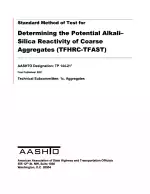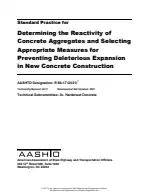AASHTO T 364-17 (2021) PDF Download
Standard EN SampleStandard Method of Test for Determination of Composite Activation Energy of Aggregates due to Alkali-Silica Reaction (Chemical Method)
Also Known As:
The AASHTO T 364-17 (2021) standard is a method for determining the composite activation energy of aggregates due to alkali-silica reaction (ASR) using a chemical method. This test is used to measure the reactivity of fine and coarse aggregates by subjecting them to an alkaline solution that simulates the pore solution chemistry of portland cement concrete.
The purpose of this test is to assess the potential for ASR in aggregates, which is a chemical reaction that can occur between certain types of reactive silica in aggregates and alkalis in the concrete. ASR can cause expansion and cracking of concrete structures over time, leading to durability issues.
By measuring the composite activation energy of the aggregates, this standard provides a quantitative indicator of their reactivity and potential for ASR. The test involves subjecting the aggregates to the alkaline solution and measuring the heat released during the reaction. The activation energy is then calculated based on the temperature rise and time.
This standard provides a reliable and standardized method for assessing the ASR reactivity of aggregates, helping engineers and researchers in the construction industry make informed decisions regarding the use of aggregates in concrete mixtures. It ensures that aggregates with high reactivity are identified and appropriate mitigation measures can be taken to prevent ASR-related issues in concrete structures.
| Language(s) | English |
| File Size | 1.3 MB |

